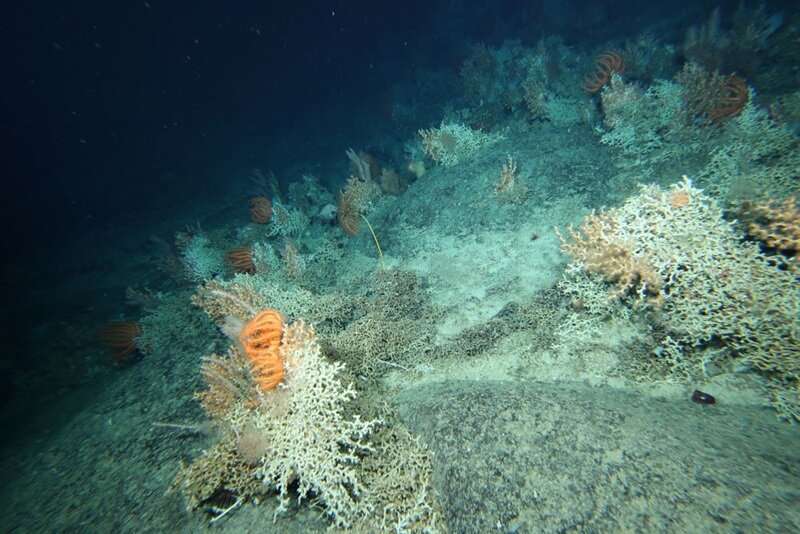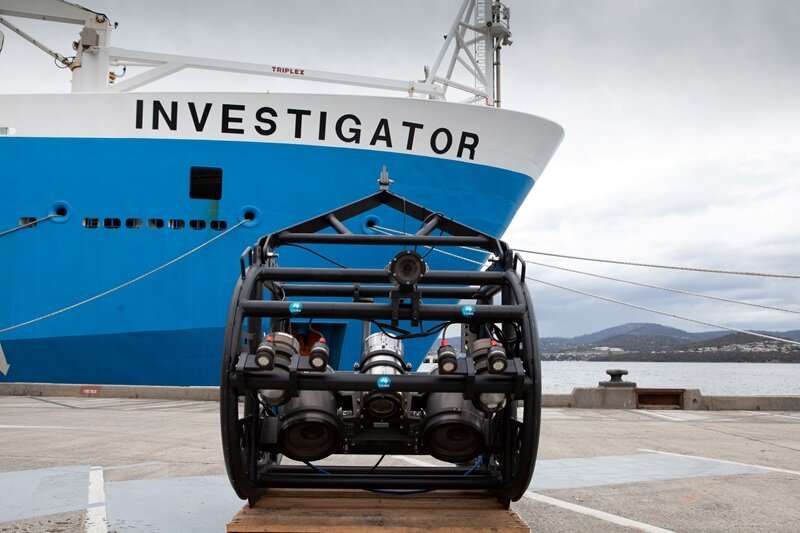This article has been reviewed according to Science X's editorial process and policies. Editors have highlighted the following attributes while ensuring the content's credibility:
fact-checked
trusted source
proofread
Deep learning system can analyze images to protect deep-sea coral reefs much faster than humans

Hundreds of meters below the ocean's surface, where the sunlight gives way to darkness, coral reefs play host to a remarkable range of bottom-dwelling species. These deep-sea reefs are home to squat lobsters, seaspiders, crabs, brittle stars and soft corals, among many others.
The reefs are hard but fragile; easily damaged by nets towed along the seabed by industrial fishing ships. Once harmed, these vulnerable marine ecosystems are slow to recover. To help protect deep-sea coral reefs, mapping and monitoring is a high priority for scientists, conservationists, and sustainable fisheries.
Observing the seabed is a costly and difficult challenge. One solution is image-based surveys. This involves towing a rig of cameras behind a vessel to take high-quality images of the seabed. This part is simple enough.
But then, scientists must review each image, frame by frame, to identify features of the seafloor. They are looking to distinguish established coral from things like coral debris, rubble from other living organisms, sand, gravel, and rock.
Using deep learning to help deep sea monitoring
This time-consuming and labor-intensive process creates a bottleneck. It limits the amount of data available to make decisions about which strategies are working to protect deep-sea coral reefs.
That's where artificial intelligence (AI) comes in. Our researchers have developed a deep learning system that can analyze images to identify and measure deep-sea coral reefs, in a fraction of the time it takes a human.
The system is made up of a multi-layered network of artificial neurons. It aims to mimic the human brain by learning how to identify complex patterns within data.
"The deep learning system is incredibly fast and accurate," said Chris Jackett, one of the study's authors and a research scientist at CSIRO.
"The final trained model classified more than 2,300 images in less than 20 minutes—a task that would take a person more than three months," he said.
It learned to tell the difference between six features of the seafloor—established coral, coral rubble, rubble from other living organisms, sand or mud, pebble or gravel, and rock—with an accuracy of 98.19%. In some cases, it performed more consistently than a person.

The model was trained using images collected from our RV Investigator, during a voyage off the southern coast of Tasmania in 2018.
Our deep tow camera system recorded continuous video and took photos every five seconds, at depths between 600 to 1,800 meters below the surface.
Researchers reviewed nearly 6,000 photos manually, which were then used to train the deep learning system. The initial dataset was made up of a massive 140,000 data points or "snips."
Training AI to look past the photobombers
As it turned out, the data was too "noisy." Too many snips contained a mishmash of different features, were too dark or too light, or got photobombed by local fauna like seastars or urchins.
Our researchers set to work cleaning the data, cutting it down to around 70,000 snips that were clean enough for the model to learn from. They experimented with different ways of training the model, and different network structures, until they hit upon a combination that achieved 98.18% accuracy.
When the final deep learning model was tested on uncleaned data that it had never seen before, it performed at least as well as a person. It was consistently accurate, even for complex images with lots of features, which can prove tricky for humans to classify.
AI gives our researchers a hand to protect coral reefs
While AI can drastically speed up this process, the research still needs a human touch.
"We think having a person in the loop will be the most efficient way to use this deep learning model on new images," said Chris. "When the model is uncertain about how to classify something, a person can step in to help the model learn."
AI is coming to the rescue to protect deep-sea coral reefs and other fragile ecosystems. In the future, it could be used by deep-sea fisheries—like New Zealand's Deepwater Group—to minimize impact on the environment.
It offers great potential in tackling a major conservation challenge facing our world oceans.
Provided by CSIRO

















